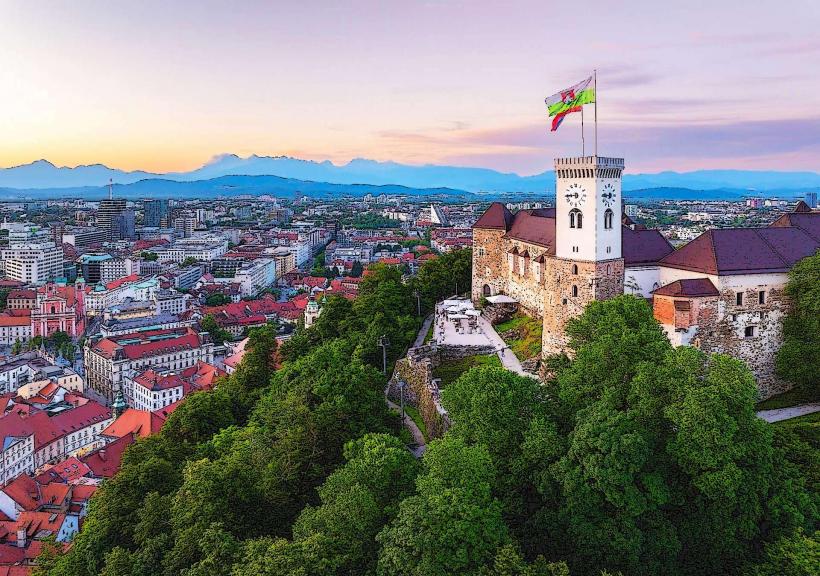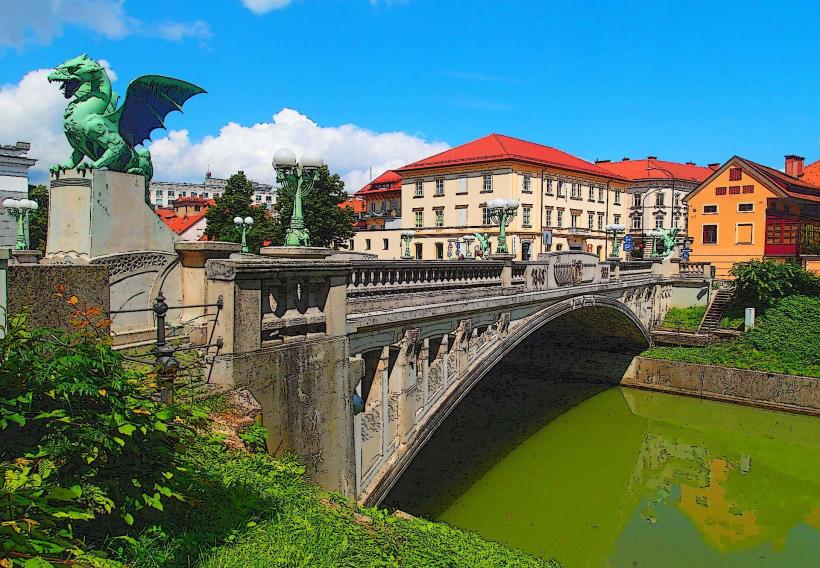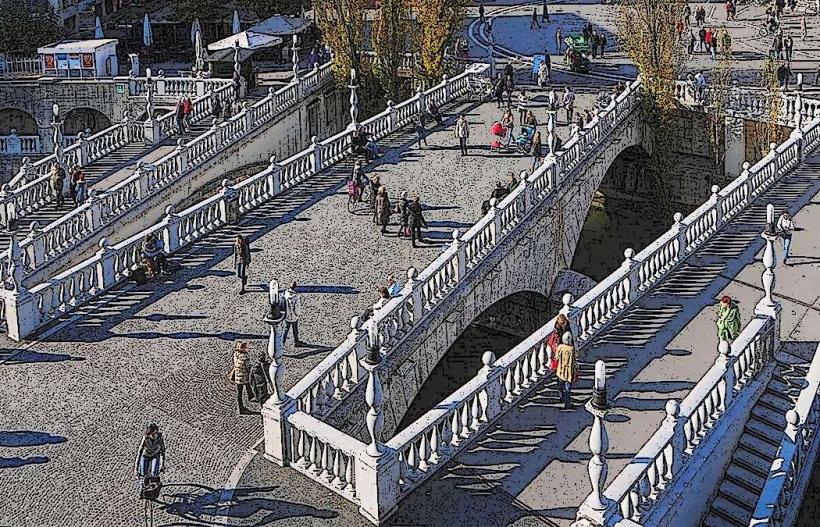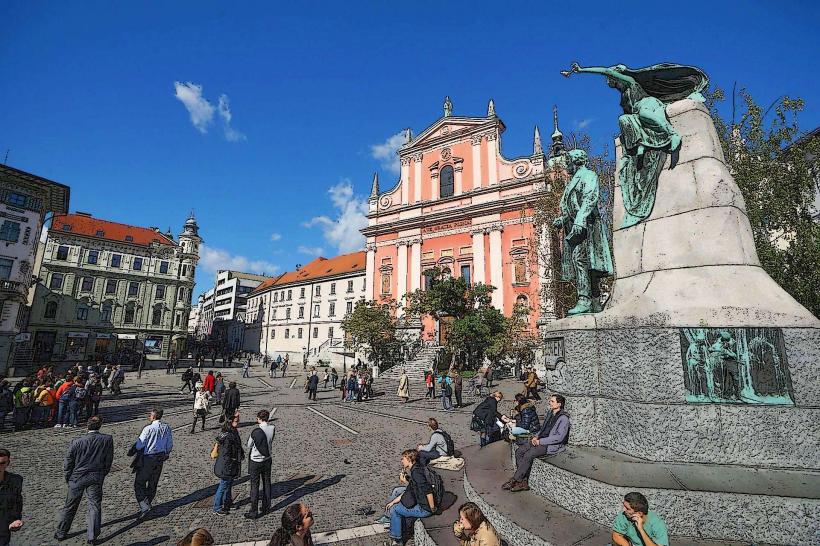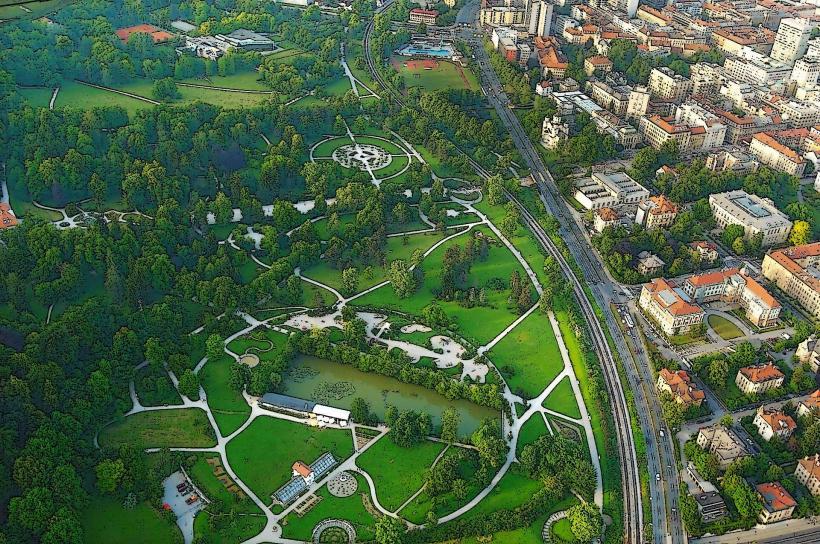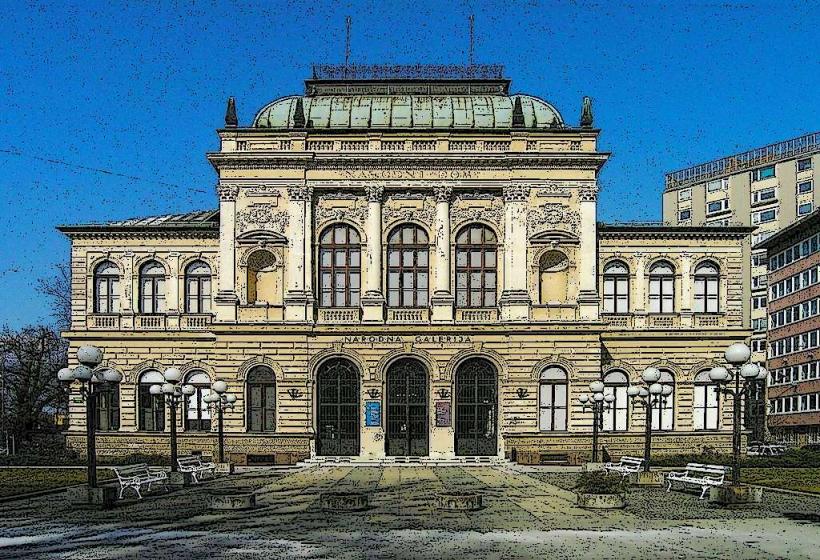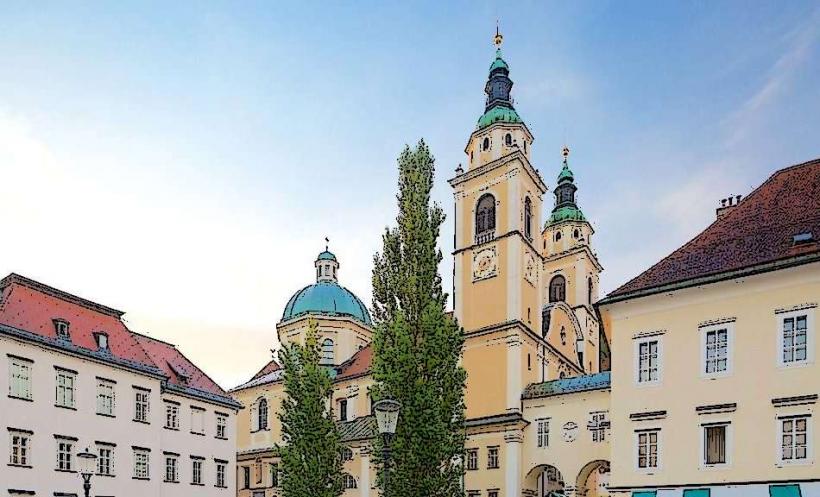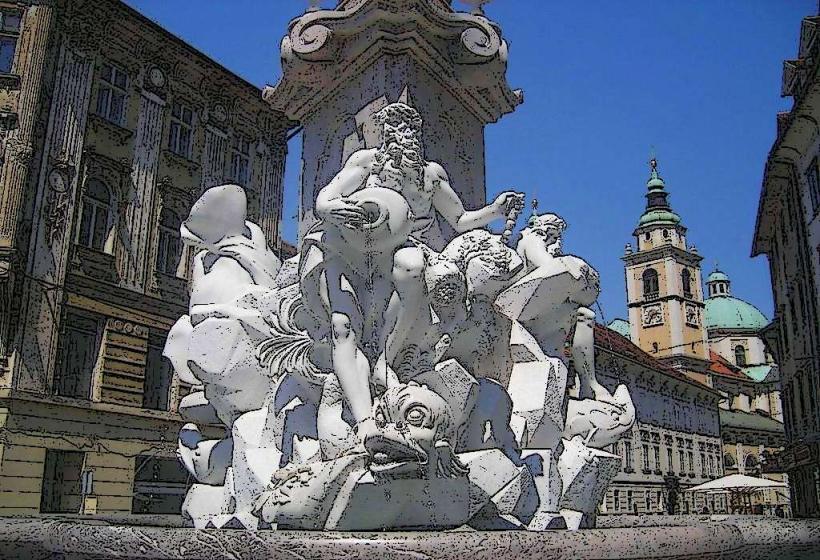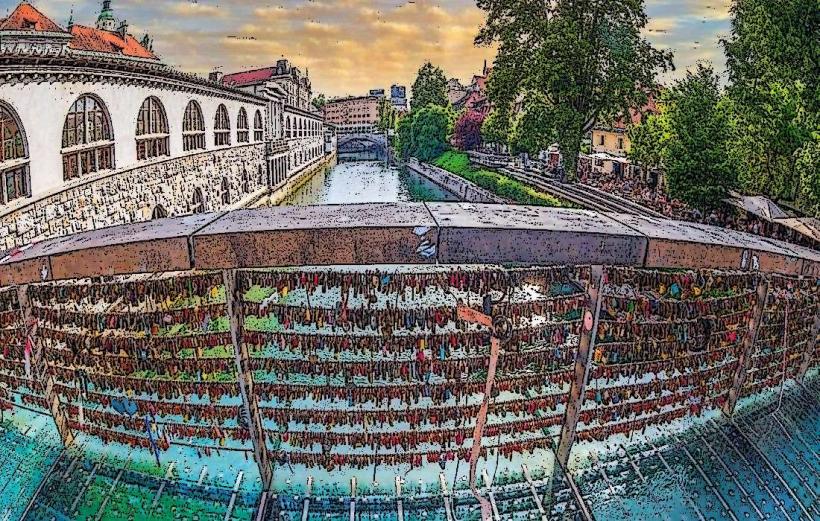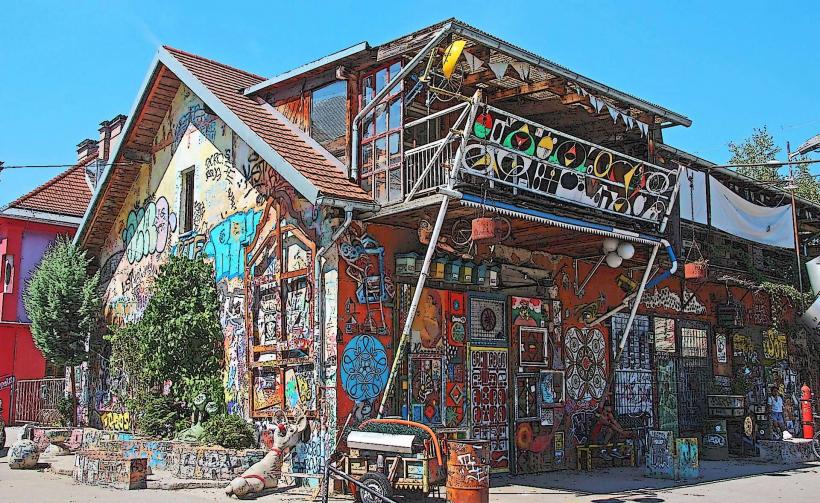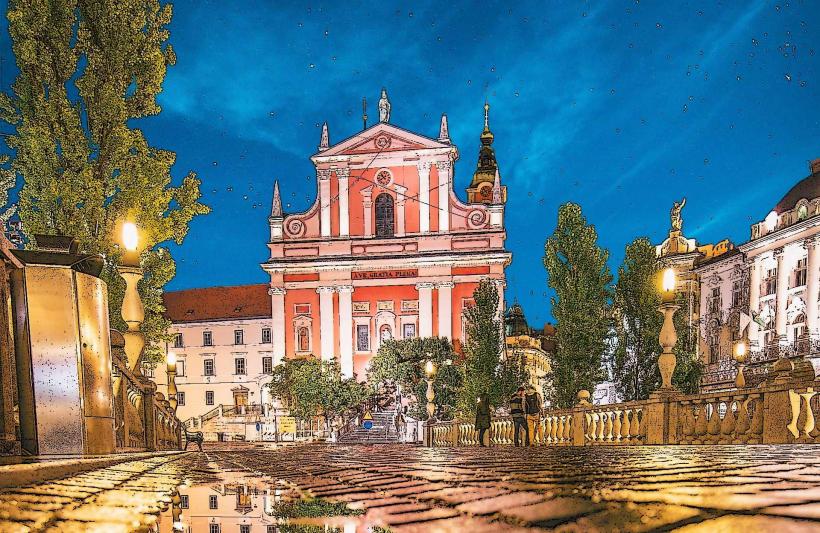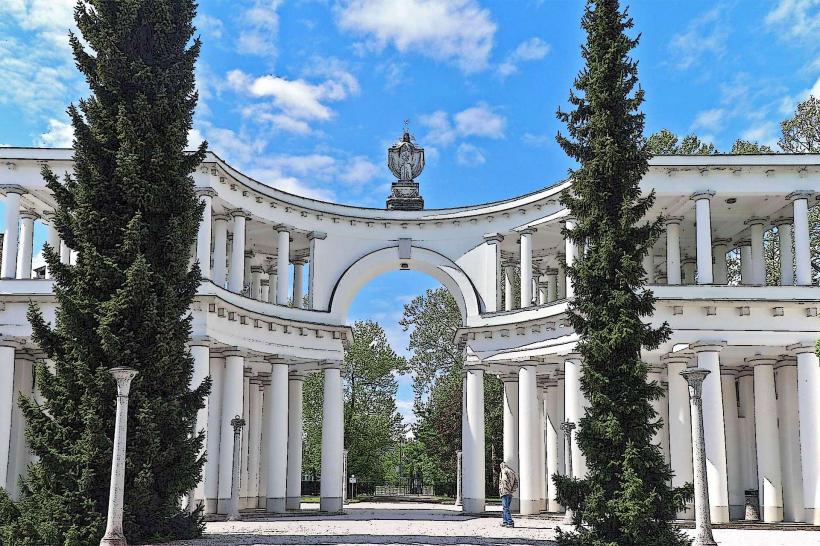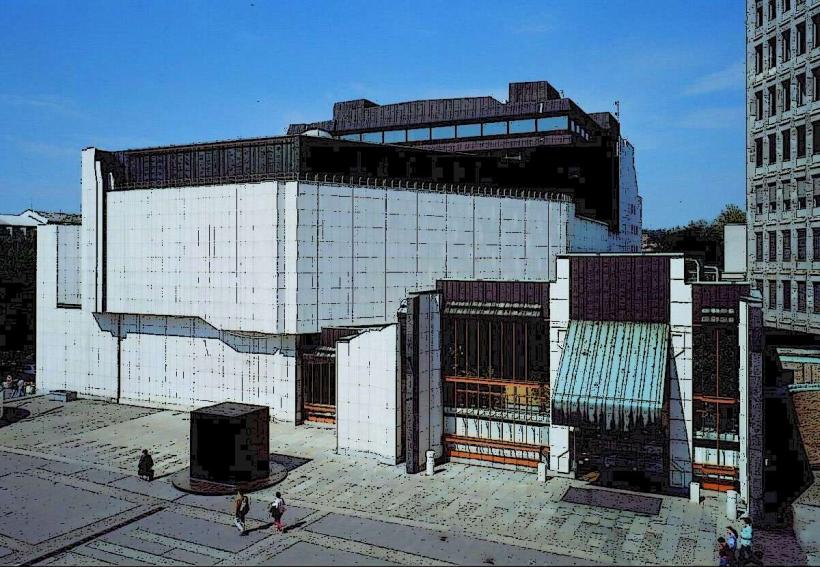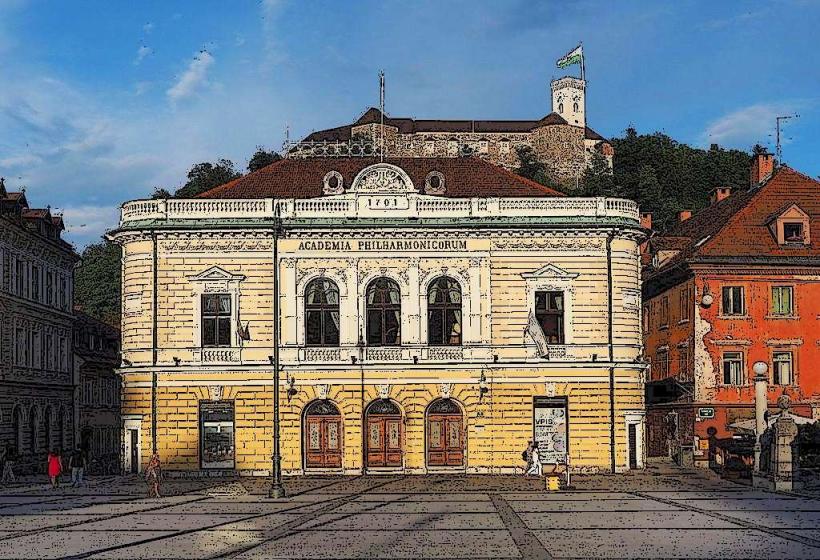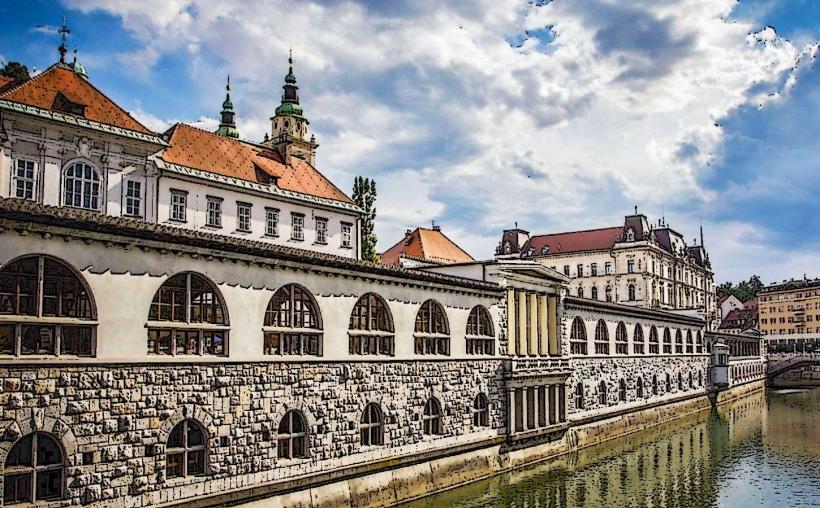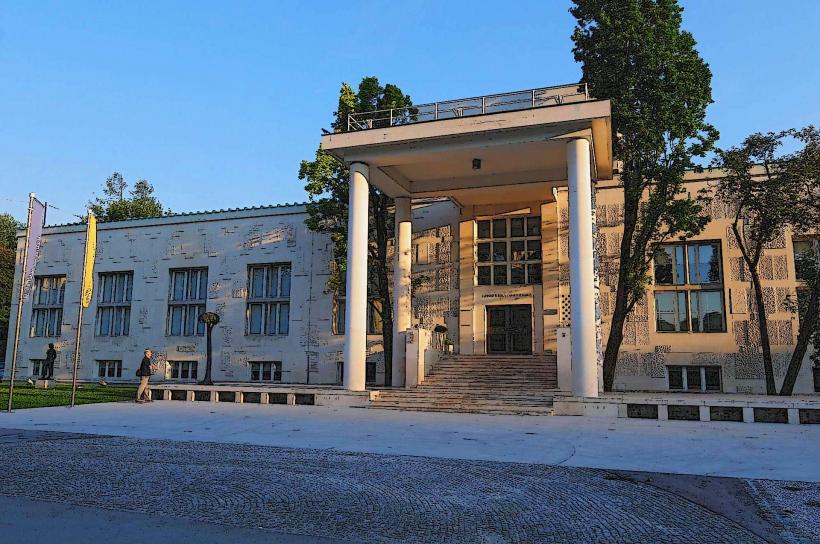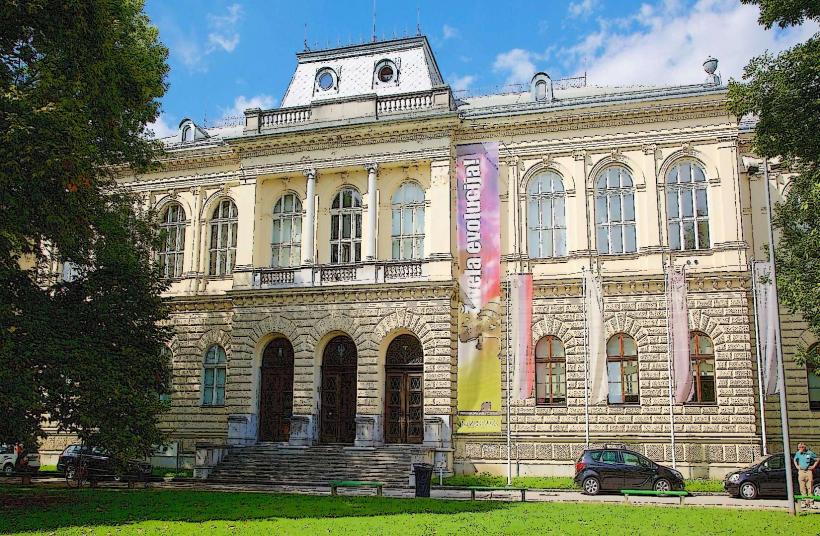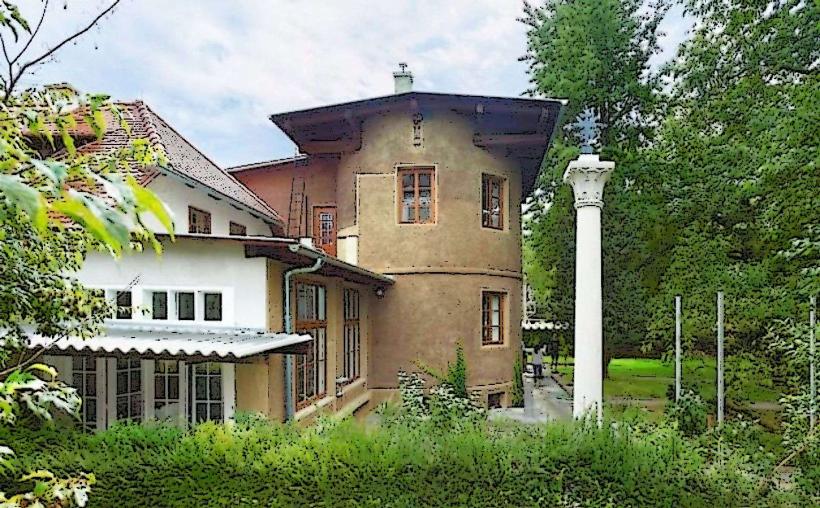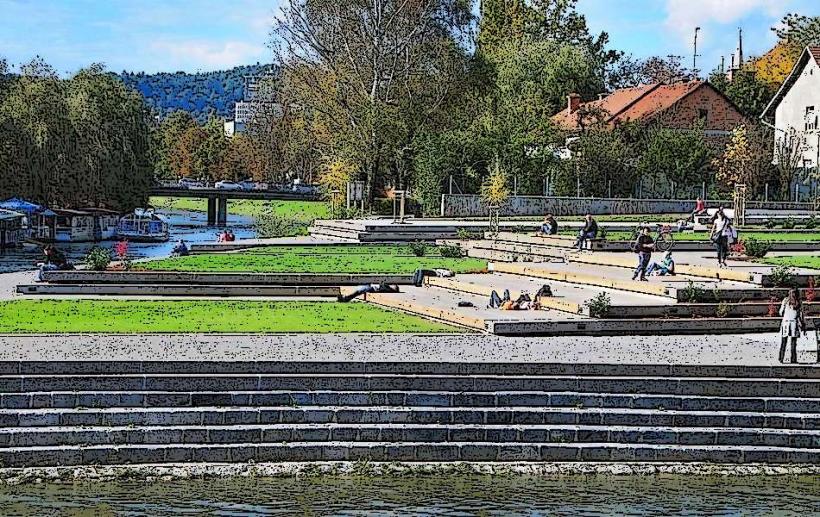Information
Landmark: Ljubljana Town HallCity: Ljubljana
Country: Slovenia
Continent: Europe
Ljubljana Town Hall (Ljubljanska mestna hiša) is a historic and architectural landmark located in the old town of Ljubljana, Slovenia. It has been the seat of the city's municipal government for centuries and stands as one of the most important buildings in Ljubljana's cultural and historical heritage. The Town Hall is known for its distinctive Renaissance and Baroque architecture, as well as its association with the city's political, civic, and cultural history.
General Overview
Name: Ljubljana Town Hall (Ljubljanska mestna hiša)
Location: The Town Hall is situated in the heart of Ljubljana’s old town, along the Town Hall Square (Mestni trg), one of the central areas in the city. The square is surrounded by notable buildings, such as the Robba Fountain and St. Nicholas’ Cathedral, making it a popular and vibrant spot for locals and tourists alike.
Function: The Town Hall has historically served as the center of municipal administration and remains an important government building for the city of Ljubljana. It houses the office of the Mayor of Ljubljana and other administrative functions related to the city government.
History and Construction
Origins: The site where the Town Hall now stands has been an important civic and administrative location since the 12th century. The earliest buildings on the site were likely simple wooden structures, which were replaced over time with more permanent stone buildings.
Construction: The current Renaissance-style building was constructed in the 16th century, primarily between 1521 and 1534. It was designed by the architect Jurij Dalmatin, who also played a significant role in the urban planning of Ljubljana. The building was meant to reflect the city’s growing importance and its wealth during the period of Habsburg rule.
Renovations: Over the centuries, the Town Hall underwent several renovations and expansions. In the 18th century, Baroque elements were added to the building's design, particularly in the form of decorative facades, frescoes, and sculptures. The building was further altered in the 19th century and has undergone some modernization in recent years.
Architecture and Design
Exterior
Facade: The Town Hall’s Renaissance facade is one of its most striking features. The building’s symmetrical layout, with its arched windows and central entrance, exemplifies Renaissance architectural principles. The facade is adorned with stonework, pillars, and arches, which were crafted with meticulous attention to detail. The most prominent feature of the facade is the grand staircase, which leads to the first floor.
Clock Tower: The building’s clock tower is another key feature, marking the Town Hall’s prominent position in the city center. The tower, which stands at about 30 meters, is topped with a small dome and weather vane, making it a recognizable point in the Ljubljana skyline.
Sculptural Details: The facade is decorated with various sculptures and reliefs that reflect the Renaissance and Baroque periods. These sculptures include coats of arms of Ljubljana’s guilds and notable figures, as well as symbolic representations of the city’s identity and values. The most famous statue is the Mayor’s Statute of Francis of Assisi, which adorns the upper part of the building.
Interior
Main Hall: The interior of the Town Hall is equally impressive, with its spacious hallways, galleries, and historical rooms. The main hall, used for official events and functions, is decorated with elegant frescoes, stucco work, and historical paintings depicting the history of Ljubljana.
Council Chambers: The Council Chambers are located on the upper floors of the Town Hall. These rooms have been preserved as they were when they served as the meeting places for the city council. The rooms are decorated with Baroque frescoes and historic portraits of important figures from Ljubljana’s past.
Mayor's Office: The office of the Mayor of Ljubljana is also located in the Town Hall. The room is a blend of modern office spaces and historic elements, maintaining the building's connection to its civic roots.
Atrium: The central courtyard or atrium is an open-air space surrounded by galleries. It serves as a peaceful gathering place and hosts various events throughout the year, such as open-air concerts or exhibitions. The courtyard's architecture blends Renaissance and Baroque elements with some later modifications.
Cultural and Civic Importance
Historical Significance: Ljubljana Town Hall has served as the political and administrative heart of the city for centuries. It has been the setting for numerous official ceremonies, meetings, and important events in the history of Ljubljana. The building continues to be a symbol of Ljubljana's rich history, resilience, and growth.
Art and Culture: The Town Hall is not just an administrative center but also a cultural venue. It has hosted art exhibitions, cultural events, and public gatherings. The building’s art collection includes historical paintings and sculptures, many of which depict key figures in the city’s history or are related to the cultural heritage of Ljubljana.
Public Events: The Town Hall also hosts important civic events, such as mayoral inaugurations, New Year’s Eve celebrations, and national holidays. It is a space for dialogue between the city's leaders and its citizens.
Visitor Information
Opening Hours: Ljubljana Town Hall is typically open to the public for visits during regular business hours. However, as it is still an active government building, there may be restrictions or closures during official events or administrative functions.
Admission: The building is generally free to enter for visitors, although there may be a fee for accessing certain parts of the building or participating in special tours or events.
Guided Tours: The Town Hall offers guided tours in several languages. These tours provide visitors with a deeper understanding of the history, architecture, and cultural significance of the building. They also offer insight into the role of the Town Hall in Ljubljana's governance.
Accessibility: The Town Hall is centrally located and can be easily reached on foot from many parts of the city. It is wheelchair accessible and offers easy access for visitors with special needs.
Conclusion
The Ljubljana Town Hall is an essential part of the city's historical, political, and architectural landscape. With its Renaissance and Baroque elements, richly decorated interior, and cultural significance, the Town Hall remains one of the most iconic buildings in Ljubljana. Whether for its historical importance, architectural beauty, or cultural role, the Town Hall is a must-visit landmark in the Slovenian capital, offering visitors a chance to explore both the past and present of Ljubljana's civic life.

